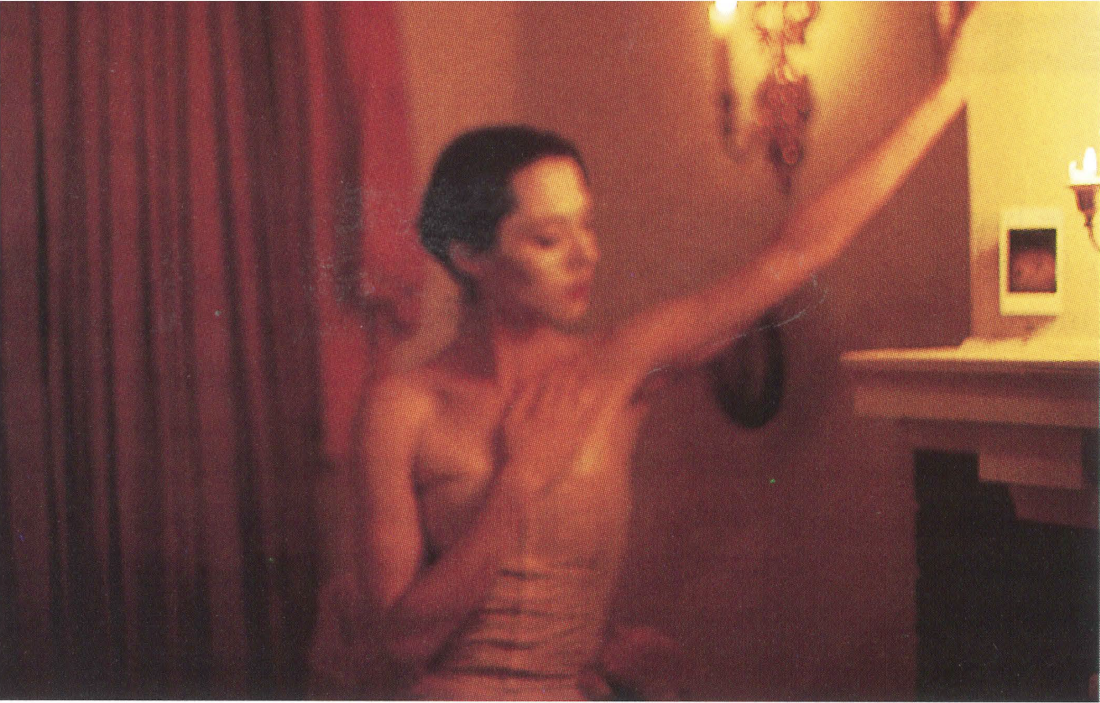The Way of All Flesh
I’ll admit right from the start that of all contemporary art forms, I’m most suspicious of performance art. Despite my continual fascination with it, I often find myself defending it to sceptics. It’s been almost 20 years since Chris Burden spoke at the University of Manitoba, and I can still get excited describing his lecture/performance to anyone willing to listen.
I’m doing the same thing with Jeannette Angel. In her performances I’m made aware of a formidable talent: she is an artist with extraordinary intelligence, skill and emotional range. And, unlike many other performance artists I’ve witnessed, she has real and not just feigned, courage. All of these elements are amply demonstrated in “Polaroid Rot,” a piece performed in the parlour of Angel’s own apartment near the end of June.
The performance had three key elements: a selection of rotting fruits and vegetables placed on the fireplace mantel and on the floor; on the opposite wall, a series of nude Polaroids which you pulled down long strings and held up to candlelight; and the artist herself, leaning on the mantel at the far edge of the fireplace and dressed in a highly stylized 16th-century gown of her own creation. This gown opened from the waist down, revealing a codpiece that took the form of a mirror frame. Placed around the room were bottles of wine and loaves of bread for the audience to drink and eat while the performance unfolded.

Jeannette Angel, “Polaroid Rot”, June 1994, Documentation Photograph
There was much here for both the mind and the body. The performance may, in fact, have been predicated upon the tension between them and their corollaries.
The chief of these is to be found in the conflict between the transience of the flesh (the rotting fruits and vegetables) and the “immortality” of Art (the ability of the photograph to transcend mortality and “fix” her flesh at a point in time). This is a pretty common duality but it’s presented here in a startlingly original way: the conflict is turned into a double dialectic in which both poles contain within themselves another opposition. The rotting fruit, through its cloyingly sweet smell and visual appeal, conveys not only the morbidity of the flesh but also a strange beauty. And the images capture not only the beauty of the body but produce a poignant sadness as well. The poignancy that arises out of a recognition that the woman in the Polaroids, like the fruits on the other side of the room, will eventually go the way of all flesh. The images, then, embody a Pyrrhic victory: Keats’s Grecian urn fixes the youthful figures forever, but it is a “cold pastoral.”
There are other tensions which I find no less interesting. The “heat” of the room, the suffocating presence of the fruit, the warmth of the candles, the breath and sweat of the invited audience, the burning taste of the wine in your mouth—all these play off beautifully against the “cool” medium of the Polaroids.

Jeannette Angel, “Polaroid Rot”, June 1994, Installation Polaroid
The most devastating oppositions, however, are to be found among the images themselves. On the back of the apartment door are two Polaroids: in one the artist is a beautiful, mysterious Anaïs Nin; in the other she is a screaming male caught in a tortured delirium. Even more compelling are the images focussing on the pudenda. Here the “innocence” of the child’s genitals is subverted by the knowledge that they are in fact shaved and belong to an adult artist, who carries within her the memory (both physical and emotional) of a time before art. Many people find Sally Mann’s images sad because they capture an innocence that the viewer knows must pass; how much sadder are these images, whose “innocence” is contrived, a desperate attempt to let go of the ephemeral and move back the hands of time. Removing the hair from the pudenda doesn’t make you a child—not even in a photograph—and the artist acknowledges this fact in some of the images by touching the labia with paint. (Or is it lipstick?)
As in much performance art, the audience plays a role. Placing the Polaroids within reach, but making it necessary to pull them down the strings in order to get a closer look by candlelight, provides a delicious tease and a reward for involvement. But such a choice still lies with the viewer. More problematic was the verbal interaction between audience and artist. This conversation was initiated by the artist herself and, for me, was an unfortunate decision, since it partially dispelled the aura of sanctity she had so lovingly created in the room.
The tension between the temporality of the flesh and the artifice of creation is appropriately synthesized in the artist’s body. She is a woman with a mask. She wears human clothing but from another century. She is simultaneously a living, breathing person and a piece of sculpture. Her vaginal area, from which life proceeds, is framed in a highly artificial way, removing it from the biological and placing it within the aesthetic. The ovaries, which emerge from underneath the mirror and spread out over the artist’s hips, are pushed to the periphery of the body, as if expelled from the womb. The brilliantly red mouth is like a rotting fruit: wet, seductive, faintly obscene. The body itself, then, thus becomes the tortured site for perpetuating the artist’s dialectic. As Yeats would have it:
A woman can be proud and stiff
When on love intent;
But love has pitched his mansion in
The place of excrement;
For nothing can be sole or whole
That has not been rent.
“Crazy Jane Talks with the Bishop”
Jeannette Angel did not invent this idea, but in “Polaroid Rot” she presents it in a fashion, both intellectual and visceral, that takes your breath away. ♦
Mark Duncan is a Winnipeg-based teacher, editor and writer.
“Polaroid Rot,” a performance by Jeannette Angel was staged in the artist’s Winnipeg apartment on June 29, 1994.

